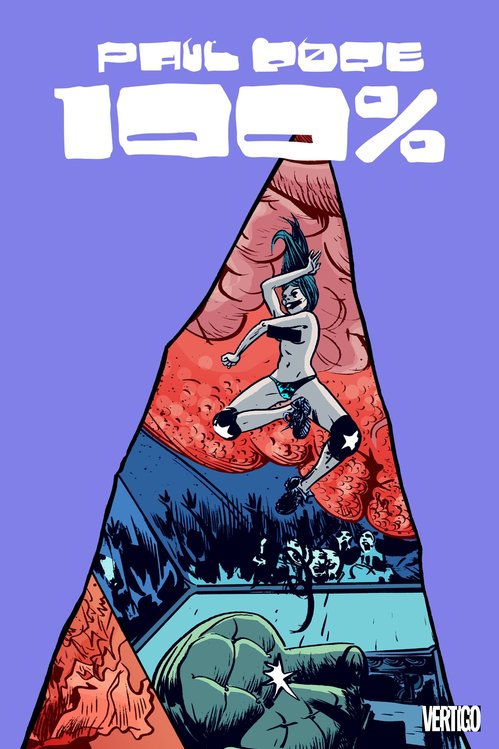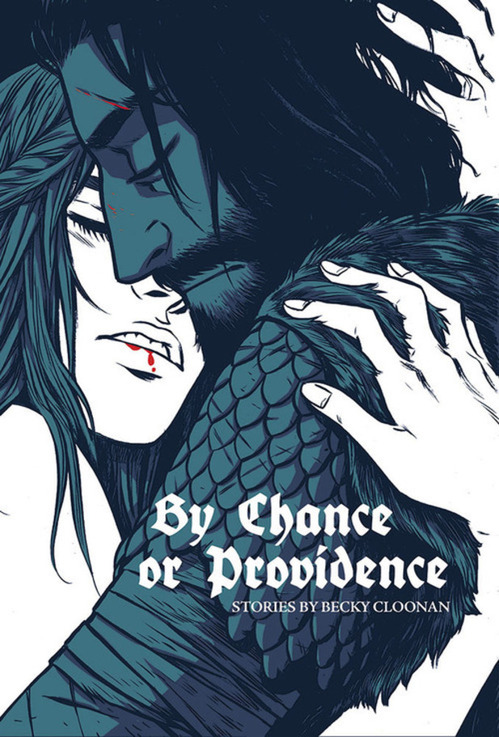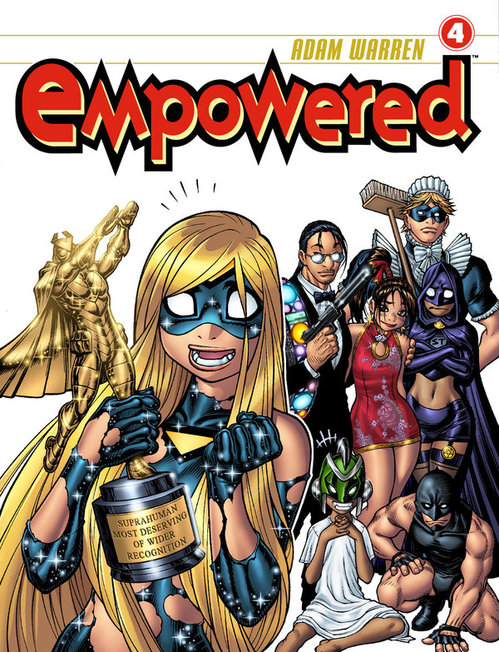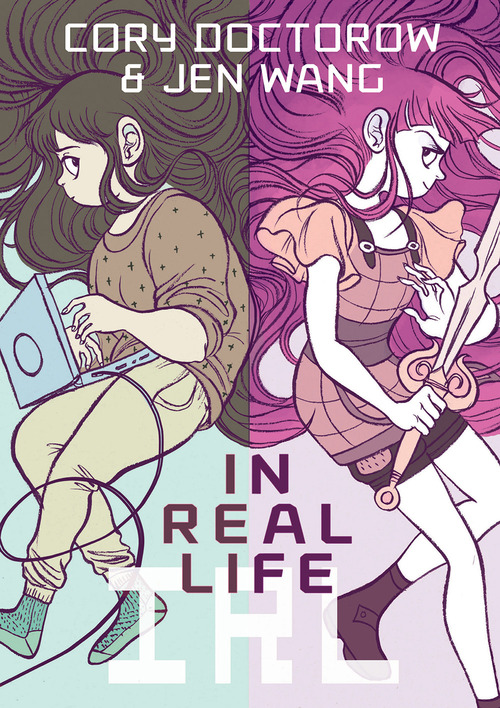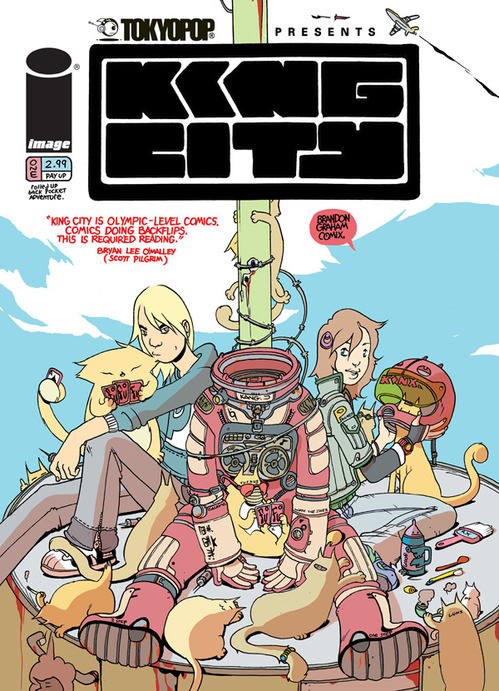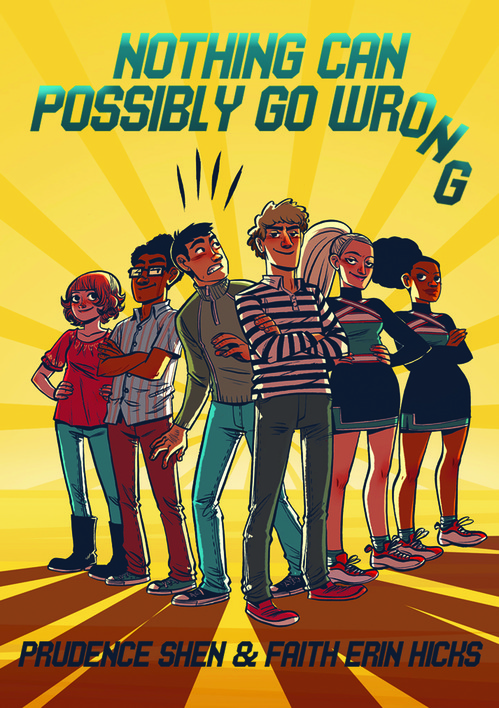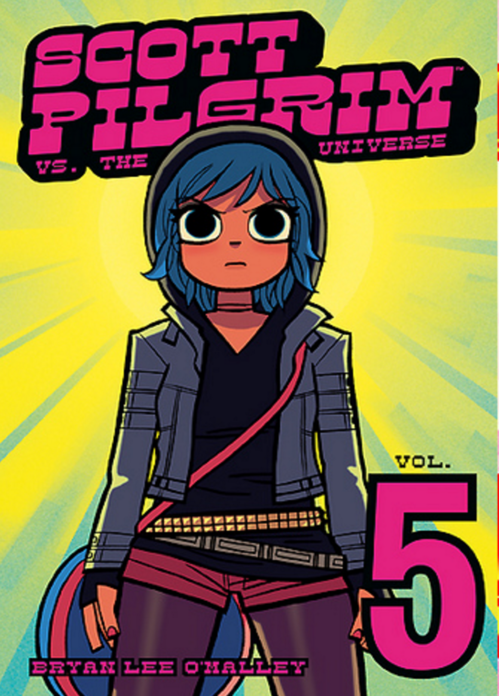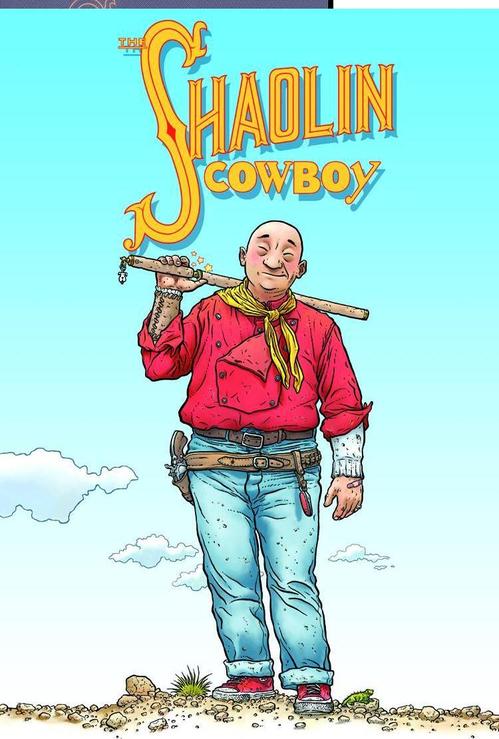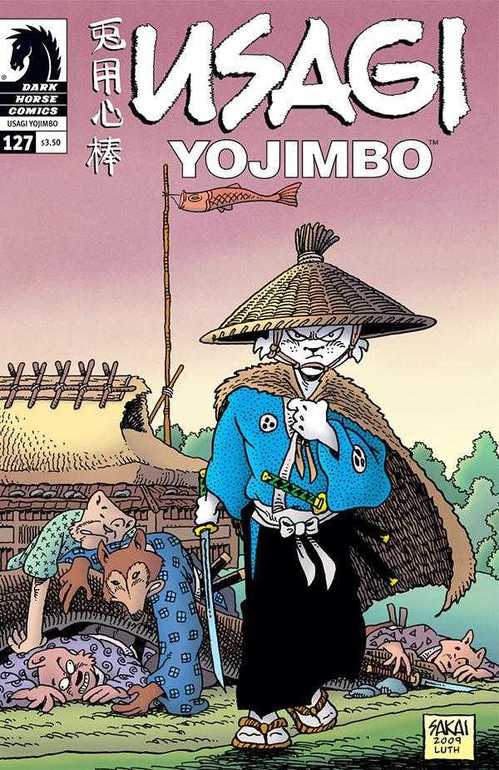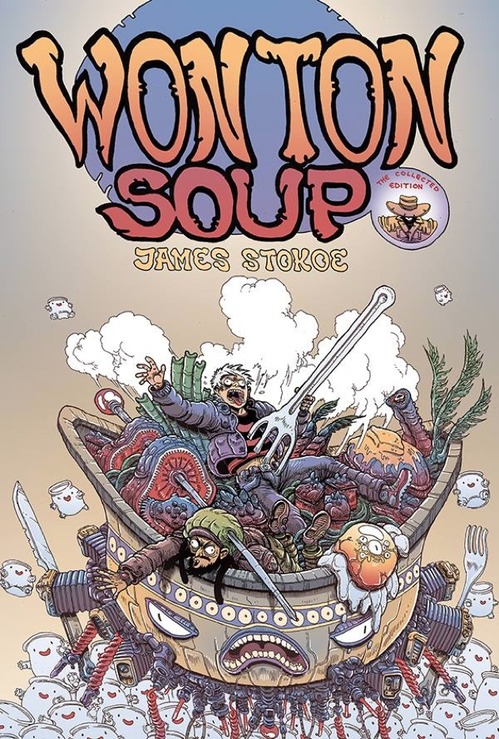Earlier this month at Paste, we shared a list of 10 essential manga books that belong in every collection. Looking at it both in terms of accessibility and importance, our picks represented books that had some form of obvious cultural impact and lasting influence—and there’s no easier way to track that than to look at manga created outside of Japan.
Often referred to as original English-language (or OEL) manga, a number of artists worldwide have created their own form of manga outside of the traditional definition (i.e., comics created in Japan by Japanese creators in the Japanese language, based on a particular style). As referred to in the last piece, manga tends to carry an (unfortunate) inferior connotation amongst comic readers, one that’s not particularly warranted.
By looking at some of the most popular artists and talents currently working on manga-inspired work, hopefully we can help to broaden your horizons even further to the importance of manga within the climate of sequential art and funny books.![]()
100% by Paul Pope
Paul Pope is one of comics’ all-stars. He’s a terrific storyteller with one of the most recognizable artistic styles today, so there are very few comic fans unfamiliar with Pope and his signature aesthetic. And while there are many books that showcase his kinetic talent and sleek style, 100% feels like his most personal work. An intertwined futuristic love story that follows a few star-crossed lovers in a cyberpunk landscape, 100% is Pope’s most unabashed love letter to the medium and a direct attempt (according to Pope) at making “American Manga.” The more relaxed narrative of the story allows Pope’s characters and artwork to breathe in a way that his fast paced, hyperactive artwork doesn’t often afford, and it’s in 100% that we get to see a softer side of the artist. While Pope is frequently showcased as a future-cool creator, someone always on the bleeding edge of reality and fiction, 100% still remains as one of his most balanced and intimate endeavors.![]()
By Chance or Providence by Becky Cloonan
Becky Cloonan has made consistent waves with her industry contributions, both as an excellent pop artist and pioneer (she made headlines as the first woman to draw the main Batman). And with By Chance or Providence as evidence, Cloonan has made her manga-inspired artistic sensibilities a mainstay in the industry. With a history of self-publishing Eisner-winning mini comics, Cloonan released the thematic trilogy last year to mass critical acclaim. Her broody storytelling and heavy inks give us compelling gothic horror and medieval sagas, and her talent to blend multiple genres make her a force to be reckoned with. And while Cloonan has a rather impressive library now with everything from slice of life drama to bombastic sci-fi action, the By Chance or Providence trilogy is what really showcases the apex talent she possesses.![]()
Empowered by Adam Warren
It’s impossible to make a list of this kind without including Adam Warren. With one of the most notably manga-influenced art styles this side of Japan, Warren has been creating great comics for the better part of the last two decades. The creator followed up celebrated works such as The Dirty Pair and a few stints at Marvel (Livewires, Iron Man: Hypervelocity) with the debut of Empowered in 2007. The story follows Elissa Megan Powers (aka Empowered), a superheroine who gains powers from her super suit—yet, she always ends up in some kind of precarious position against her enemies. Empowered gained a certain reputation among those who have never read it based on its T&A content, but what most people misunderstand is that it’s not a degrading comic. Instead, Empowered is a send-up of pretty much every “sexy superhero” trope imaginable. Warren assimilates various Eastern and Western comic traditions and wraps it all up in a book full of humor and character, and Empowered straddles that line between traditional manga and American superhero comics in a way few other series could ever hope to accomplish.![]()
In Real Life by Jen Wang (and Cory Doctorow)
While many are familiar with Cory Doctorow for his work as a sci-fi author and journalist, last year saw the release of his first graphic novel, In Real Life. The graphic novel might tell the story of a young girl getting sucked into the world of online videogaming, but the real star of In Real Life is artist Jen Wang, who brought the entire story to life (title-related pun intended). Wang’s characters channeled a sense of quirk, and her self-assured linework imbued distinctive characteristics, balancing a fantasy landscape with a more realistic one. Segueing manga storytelling techniques and characteristics alongside styles plucked straight out of various MMO videogames, Wang’s artwork allows the story to effectively layer its fantastical elements in a grounded reality. ![]()
King City by Brandon Graham
Brandon Graham’s King City is a veritable cult classic. The story follows traveling cat masters within one of the most vivid and humorous landscapes to be realized on a comic page. The world of King City is fairly non-imitable, a feat delicately pulled out of Graham’s mind with a syringe and given life in ways only he knows how to present. With shades of Shirow Masamune on one page and Adam Warren on another, King City is a definitive example of a creator utilizing manga influences in his work, throwing it all in a blender and showing up with something new in the same way that Brian Lee O’Malley did with Scott Pilgrim. As such, it’s easy to say that Brandon Graham is one of the most important creators working today, someone who refuses to let the medium grow stagnant, pushing it past its comfort zone—and while this is something we repeatedly see in his work, King City is perhaps the best example of this restlessness.![]()
Nothing Can Possibly Go Wrong by Faith Erin Hicks (and Prudence Shen)
Whether viewing Faith Erin Hicks’ earlier material (Friends with Boys), endearing Eisner-winning work in Adventures of Superhero Girl or recent licensed output (The Last of Us), Hicks is a creator with striking range and class. Within her inspired library, Nothing Can Possibly Go Wrong (written by Prudence Shen) demands special attention. Following a series of high school students who enroll in a robot fighting contest, the book is an underrated, humorous dissection of teen life and culture. Hicks brings a fairly strong manga influence into her art, particularly in her character design. Her refined linework here injects personality into her characters and conveys delicate emotions, often nailing comedic timing among the hyper-stylized kids she animates. ![]()
Scott Pilgrim by Bryan Lee O’Malley
Perhaps it’s the most obvious entry on this list, but O’Malley’s Scott Pilgrim series is the best example of OEL manga reaching mainstream success. With six hilarious volumes (recently remastered in color by Nathan Fairbairn), one endlessly rewatchable film and a game with a kick-ass Anamanaguchi soundtrack, Scott Pilgrim is a celebration of nerd affectations and culture wrapped in a glowing tribute to manga. Full of tributes and homages to Japanese comics (and comics, video games and music), Scott Pilgrim showed that there was no specific line to separate “manga” from “non-manga.” O’Malley displays the versatility and accessibility of the form that so many find alientating. And when you’re telling great stories with lovable, moral characters, it doesn’t matter the size of the page or the style of art. Comics is comics.![]()
Shaolin Cowboy by Geof Darrow
Geof Darrow’s Shaolin Cowboy is a force to be reckoned with. It’s the story of a lone wanderer with an unholy capability for destruction, and consequentially, Darrow’s work tears across the page with the fury of hurricane. With a keen eye toward the most minor of details, Darrow is one of the few creators who can put out a mostly silent comic of one man killing zombies for 100 pages and not only get away with it, but excel beautifully. Thanks to Darrow’s sense of mobility in storytelling, a book featuring a man twirling a stick with chainsaws on both ends is closer to watching a ballet than a horror film; and seeing Darrow boil down various Japanese storytelling tropes of the lone wanderer down to its essence gives us a gorgeously violent iteration of Ogami Itt? or Zatoichi.![]()
Usagi Yojimbo by Stan Sakai
Comics have a rich tradition of featuring anthropomorphic characters on worldly adventures, but few have reached the cultural success of Stan Sakai’s Usagi Yojimbo. Its Eastern influences are clear from the start; Usagi Yojimbo is set in the Edo period of feudal Japan and stars Miyamoto Usagi, a rabbit sellsword wandering the countryside. Sakai’s artwork recalls classic Japanese pieces, updated for a more traditional approach to storytelling that echoes the evolution of manga over time. Usagi Yojimbo, which made its debut in 1984, is one of the longest running OEL manga series to date, and new issues are still being released through Dark Horse Comics. And throughout the book’s 30-plus years of existence, Sakai has never disappointed; whether he’s experimenting with the medium, toying between historic adventures, sci-fi epics or humorous one-offs, or even letting Usagi Yojimbo hop into crossovers with a certain young adult group of irradiated reptiles, Sakai’s creation and work stands tall as a prominent fixture in the comic community.![]()
Wonton Soup by James Stokoe
Many know his name from the gloriously violent Orc Stain, Godzilla or his recent Marvel work. But before he was cutting off Gronches, James Stoke was mixing sci-fi adventures with bowls of dumplings in Wonton Soup. The story of one of the most talented ex-chefs in the galaxy, Wonton Soup finds lead character Johnny Boyo on an adventure against nefarious crooks and space ninjas as he returns to his kitchen for a series of increasingly ridiculous trials. Recently reprinted by Oni Press, Wonton Soup is a strong example of what a talented creator can do with OEL manga. With a deep knowledge of Japanese culture, Stoke is able to take notable traditions out of Japan and use them for this story. Not only does he make his widescreen, detailed art fit within the confines of the manga page (which, really, is a thing to marvel at on its own right) but Wonton Soup also showcases Stokoe’s budding talent years before Orc Stain was a thing. For fans of food, getting stoned, fighting jokes and making puns, Wonton Soup is a can’t-miss book.
